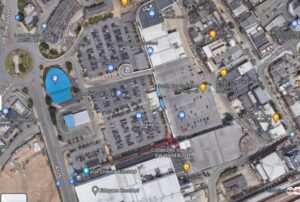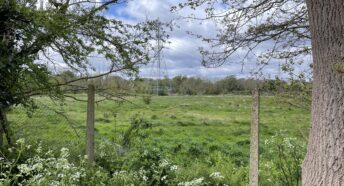Havering: should car parks give way to new housing?
In April 2023 we responded to Havering’s Call for Sites consultation.
Our response: Havering Call for Sites April 2023 final
While a ‘Call for Sites’ is carried out with a view to identifying sites where landowners may wish to propose development, we believe that, to deliver enough sites for Havering’s development needs – in a sustainable way – the council should proactively contact landowners, particularly landowners of sites which currently promote unsustainable travel patterns and/or make poor use of space. These types of sites include surface car parks; excessive road layouts (for example, unnecessary roundabouts); low-rise ‘big-box’ retail and supermarkets which usually also have large surface car parks; commercial or industrial parks in need of regeneration; and smaller sites for example rows of garages.

To this end, we identified a number of sites and we said we believe Havering should approach the landowners to establish if the sites might be used to accommodate development needs, like new housing or commercial space.
Delivering sites which promote sustainable patterns of development.
In order to effectively tackle the climate and health crises, car use and ownership across London needs to reduce. (Electric Vehicles still have carbon, pollution, road danger impacts and take up space both on roads and while parked, with impacts for public transport and public realm, so it is not realistic to plan to simply replace petrol cars with EVs). Since provision of car parking encourages trips to be made by car, we believe councils should seek opportunities to reduce car parking provision which can also free up space for development and discourage short ‘switchable’ trips (trips which can readily be made by public transport, walking and cycling) in particular.
Havering, and other boroughs, should promote higher density housing (not high rise: and the height of development should not impact negatively on the surrounding neighbourhoods and green spaces) and at the same time create new neighbourhood and district centres where it is easy to reach basic amenities on foot and where higher density populations make local amenities and public transport financially viable.
Find out more about why we promote compact cities with Green Belt.








